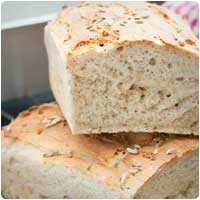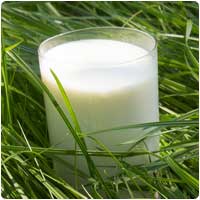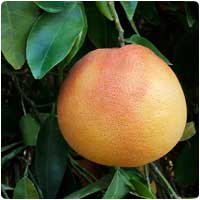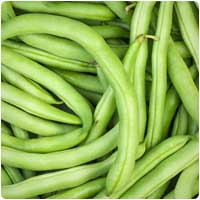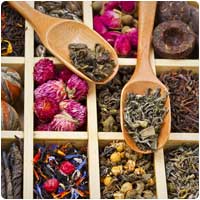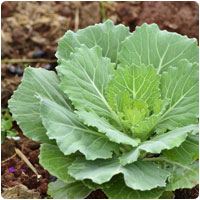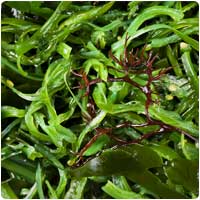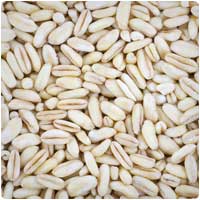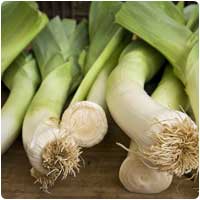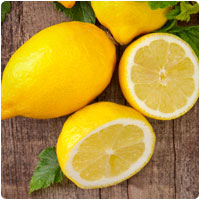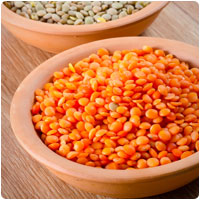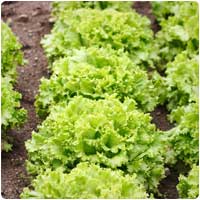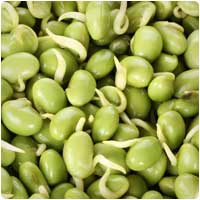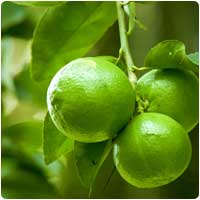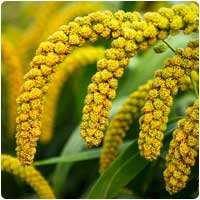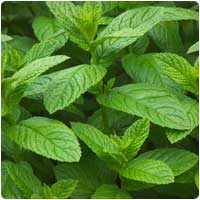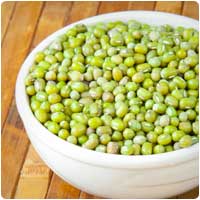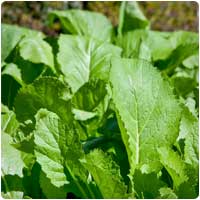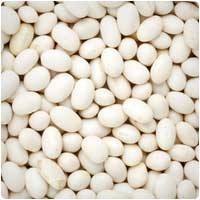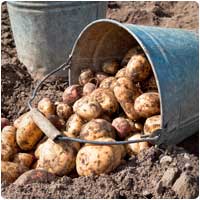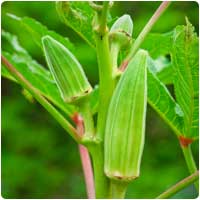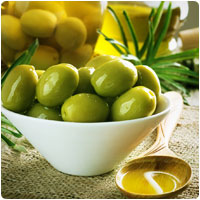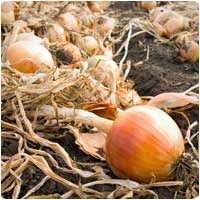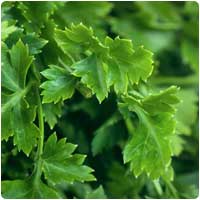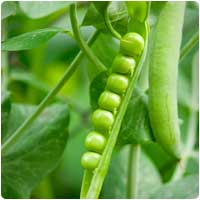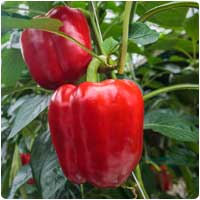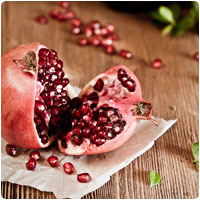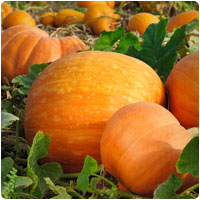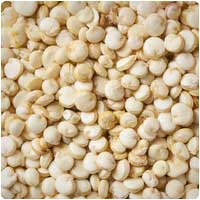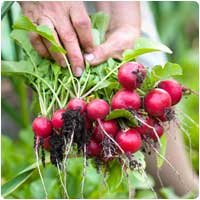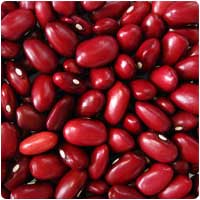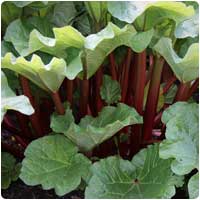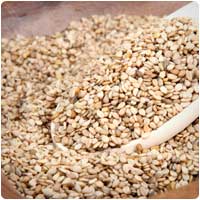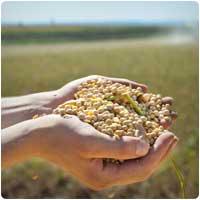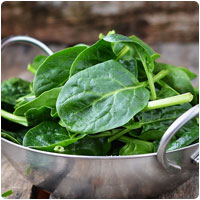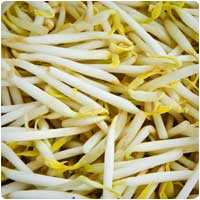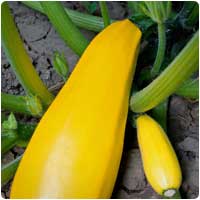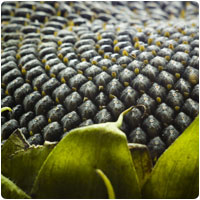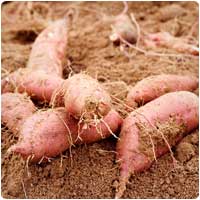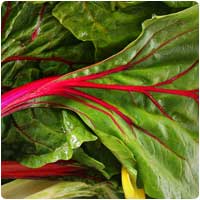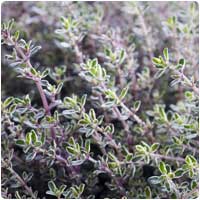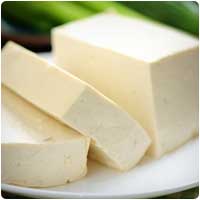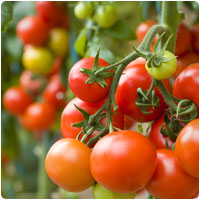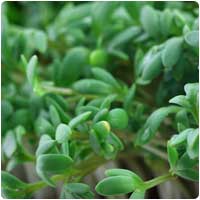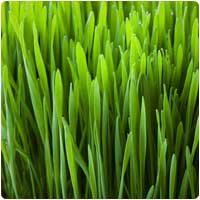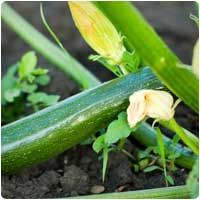Root
Grandma Roody
- Joined
- Dec 2, 2012
- Messages
- 1,836
- Reputation
- 0
- Reaction score
- 3,498
- Points
- 0
- Website
- everessencekd.com
- Currently Smoking
- My Genius Pipe!
http://bembu.com/alkaline-foods
74 Alkaline Foods to Naturally Balance Your Body
Trying to go alkaline? It’s easier when you know which foods help your body stay get to and stay in an alkaline state. A general rule of thumb is that you can eat these foods without worrying about any acidic effect they’ll have, although some are more alkaline than others. It isn’t necessary to eat only alkaline foods in order to get body’s pH levels to be alkaline, and a certain percentage of foods can be acidic, but it’s best if they’re natural, whole foods like fruits.
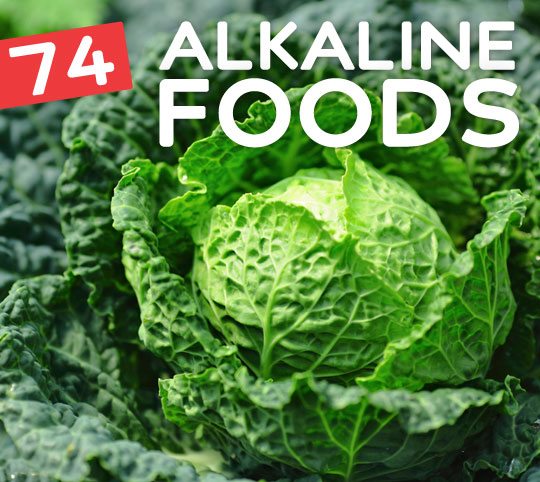
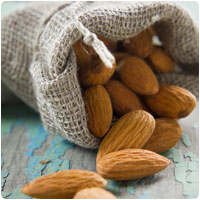
1. Almonds & Almond Milk
Almonds consistently rank on the list of healthiest foods to eat, so it’s no wonder that they’re also an alkaline food. They’ve also been linked to increased muscle gain, a lowering of cholesterol levels, and are able to assist with fat loss. You don’t have to eat a lot of almonds in order to enjoy their benefits, but they do make a great snack that you can take anywhere and can help you between meals.
Top stats (per 100g):
Calcium – 27%
Iron – 25%
Protein – 44%
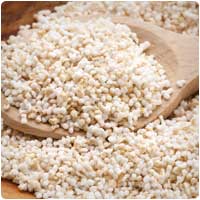
2. Amaranth
This is a grain that not many people are familiar with, but that makes a great addition to any alkaline-focused diet plan. In addition to being an alkaline forming food, it’s also known for its relatively high levels of protein for a grain, and it’s full of vitamins and minerals that are essential for overall health. If you’re not sure how to prepare it for you and your family, there are plenty of recipes available to bring you up to speed.
Top stats (per 100g):
Calcium – 16%
Iron – 42%
Protein – 14g
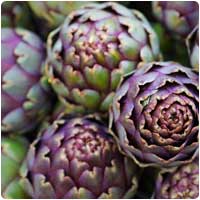
3. Artichokes
Artichokes are often seen on top of salads, or used in a dip, but there are a number of reasons why you can bring them to the forefront of your diet. One of those reasons is their alkalinity, helping to raise your body’s pH levels. They’re also full of antioxidants, help to purify the liver, and aid in digestion. So having a salad with leafy greens and topped with a hearty amount of artichokes is a great idea.
Top stats (per 100g):
Vitamin C – 20%
Vitamin K – 12%
Folates – 17%
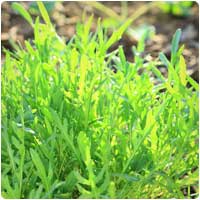
4. Arugula
Here’s a leafy green that’s worth getting to know. Arugula is often used as part of a detox diet plan, and the fact that it’s an alkaline food is a big part of that. This is full of Vitamin A and has an impressive amount of calcium in it as well. We usually associate dairy products with calcium, but here is a non-dairy way to make sure you’re getting enough. Add arugula to your cart next time you go shopping

Top stats (per 100g):
Calcium – 16%
Vitamin A – 47%
Iron – 8%
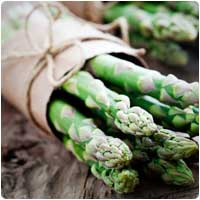
5. Asparagus
Asparagus has an alkaline effect on the body, and it just so happens that it’s one of the strongest foods you can eat in terms of alkalinity. Each food is ranked according to how alkaline it is, and asparagus is one of the “big dogs”. But it brings a lot more than that to the table, including antioxidants, nutrients, and plenty of detoxifying qualities. It’s even been noted that asparagus has anti-aging benefits, which is enough for most people to start adding more of it to their menu.
Top stats (per 100g):
Vitamin A – 15%
Vitamin C – 9%
Iron – 12%
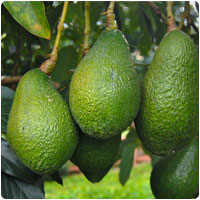
6. Avocado & Avocado Oil
It’s no surprise that avocado is on our list of alkaline foods. It’s managed to make it onto our list of superfoods as well, so you know it’s packing a nutritional punch. Avocados are high in potassium as well as healthy fat, so in addition to helping you be more alkaline, you’re getting other perks as well. You can also use avocado oil in favor of other oils that don’t provide any alkaline benefit, or worse are acid-forming in the body.
Top stats (per 100g):
Vitamin C – 17%
Vitamin A – 3%
Fiber – 27%
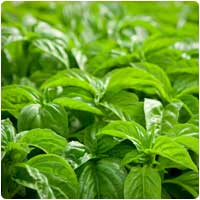
7. Basil
You might not have thought that the herbs and spices you use on your food have an effect on how alkaline or acidic your pH levels are. But as it turns out there are good spices and bad spices. Basil happens to be one of the ones that helps keep you alkaline, and it also has plenty of other things going for it, such as the flavonoids it contains. These help the body to heal and basil in general can help with several different areas of the body.
Top stats (per 100g):
Vitamin A – 175%
Vitamin K – 345%
Calcium – 18%
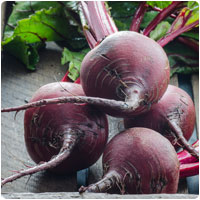
8. Beetroot
Beetroot gets more attention now than ever before, and it’s one of the foods out there that will act to help raise your pH levels. The reason it’s an important vegetable to include in your arsenal is because it’s one of the only sources of the phytonutrient betalain which may have anti-cancer properties. Add these as a side, or use them as a salad topper. Be sure to buy this one fresh and steam it, as the pickled variety has reduced nutritional value.
Top stats (per 100g):
Vitamin C – 8%
Vitamin K – 11%
Folate – 75%
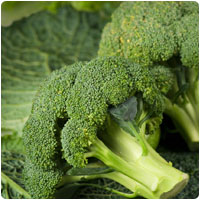
9. Broccoli
This is a quintessential healthy food and it’s easy to understand that it’s an alkaline food. Broccoli is one of those vegetables that has so much going on you simply have to make an extra effort to get more of it into your system. Some people eat broccoli every day as a way to maintain good health and make sure they’re on the alkaline side. You at least want to eat it multiple times a week, with 3 or 4 times being a good rule of thumb.
Top stats (per 100g):
Vitamin C – 135%
Vitamin A – 11%
Calcium – 4%
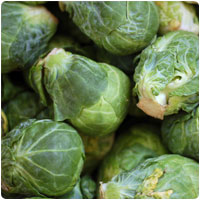
10. Brussels Sprouts
Maybe you left your Brussels sprouts on your plate untouched as a child, but it’s time to get over it and learn to like these healthy vegetables. They’ve been shown to be able to help the body break down the acids caused by acid-forming foods, which boosts your pH levels and helps you get to or maintain an alkaline state. In addition to that, they’re also packed with vitamins, minerals, and fiber, so they make a great side dish to any meal. It’s best to buy them fresh and steam them.
Top stats (per 100g):
Vitamin C – 142%
Vitamin A – 15%
Iron – 8%
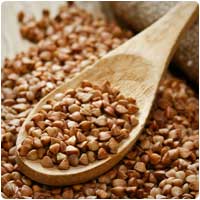
11. Buckwheat
Buckwheat gets mentioned a lot in health food circles because it doesn’t contain wheat, but has a similar texture when it’s in noodle form. Great for gluten-free followers. It’s also an alkaline food, so you can eat it without worrying if it will be acidic in your system. It’s also a surprisingly good source of protein, and has a decent amount of iron in it as well. If you’ve never used buckwheat in your cooking before, there are plenty of recipes available to get your feet wet.
Top stats (per 100g):
Iron – 12%
Calcium – 2%
Protein – 13.3g
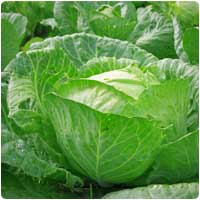
12. Cabbage
If you don’t like the taste of cabbage, keep an open mind. It could be that you just haven’t found a good recipe for it. It’s really easy to cook cabbage poorly, so give it another try if it’s on your Do Not Eat list. In addition to its alkalinity, it’s also been shown to be very effective in preventing as well as reversing certain cancers. Add to it the fiber content, and the low caloric load, and it’s a winner for just about every diet out there.
Top stats (per 100g):
Vitamin C – 54%
Vitamin A – 3%
Calcium – 5%
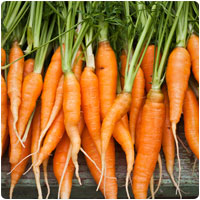
13. Carrot
Carrots are good for the eyes, but their overall effect is also an alkaline one. This makes them doubly good to eat, and they are tasty both raw, and steamed so they’re easier to chew up. Aside from the assist to the eyes, carrots also have plenty of vitamins, fiber, and potassium, making them a very well-rounded veggie. So make like Bugs Bunny and be sure to get your carrot fix every now and then.
Top stats (per 100g):
Vitamin A – 336%
Vitamin C – 10%
Calcium – 3%
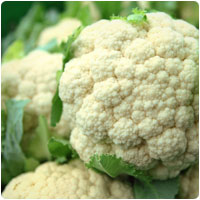
14. Cauliflower
Cauliflower is in the same vegetable family as broccoli and Brussels sprouts, and shares many of the same healthy characteristics, including being an alkaline food. It has a good amount of fiber, and it’s a great non-fruit source of Vitamin C. It’s also very easy to prepare, but to keep as much of its alkaline nature as possible, eat it raw on salads or steam it until it’s tender and easy to eat. If you’re stuck on ideas for how to prepare it and
Top stats (per 100g):
Vitamin C – 77%
Calcium – 2%
Iron – 2%
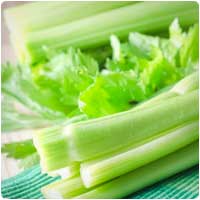
15. Celery
You’ve got to love celery, even if you don’t necessarily love the taste. In addition to being an alkaline food it’s also very low in calories, and can help you body with a host of different benefits. If you don’t like crunching it up and having the strands get stuck in your teeth, pulverize it in a blender while you’re making a green smoothie. It also plays well in a fruit smoothie, adding a bit of spiciness without overshadowing the fruit flavors.
Top stats (per 100g):
Vitamin A – 4%
Vitamin C – 2%
Calcium – 2%
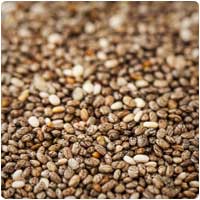
16. Chia
You might not think that these little seeds could pack such a nutritional punch, or have any effect on your body’s pH levels, but it turns out that they help with your alkalinity. The nice thing about them is you can sprinkle them on just about anything. Think about making a soup out of the veggies on this list, and then sprinkling in some chia seeds for good measure. Or add them to a smoothie to help tip it to the alkaline side. Be creative!
Top stats (per 100g):
Iron – 20%
Calcium – 20%
Vitamin A – 10%
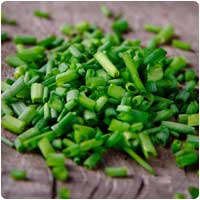
17. Chives
It’s time to increase your intake of chives, and since they don’t typically find their way onto the plate, you’ll have to seek them out. They can assist the body because their alkaline producing, and they also do a good job of flavoring up a meal, so you can think of new ways to use them. One good thing they can go on is new potatoes, which makes this alkaline list and would provide you with additional nutritional benefits.
Top stats (per 100g):
Vitamin A – 3%
Vitamin C – 3%
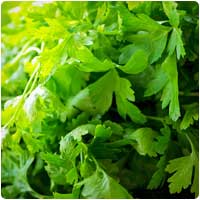
18. Cilantro
Here’s another fantastic way to add big amounts of taste to your plate, while also helping to tip your body towards being and staying alkaline. It’s hard to imagine that these little guys can make a difference, but they’re not only alkaline-forming, they can help with cholesterol, anemia, and digestion. It’s easy enough to use it in your cooking, and you can even get herb gardens for you home and grow it organically. There’s no need to eat massive amounts of it, since it combines nicely with other foods found on this page.
Top stats (per 100g):
Vitamin C – 1%
Calcium – 1%
Iron – 2%
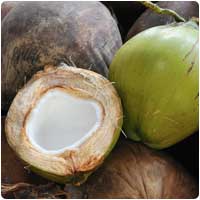
19. Coconut
Coconut is such a natural food that it’s no surprise that much of what’s inside is good for you. The health benefits of coconut milk, juice, and flesh are all well-documented, and now you can add alkalinity to its list of features. It’s sometimes hard to think of ways to add more coconut into your life, since you’ll want to avoid the packaged coconuts shavings used in baking. You’ll want to stick to things like coconut oil, and fresh coconut flesh in order to reap the rewards.
Top stats (per 100g):
Iron – 11%
Vitamin C – 4%
Calcium – 1%
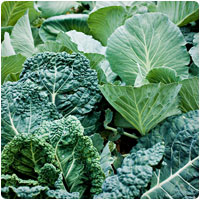
20. Collard Greens
Collard greens are a staple soul food, and this is one vegetable to get familiar with if you’re not already. Being a green, it’s swinging some serious alkaline might, and in addition to that it made our list of top cancer fighting foods, which is no coincidence since the two go hand in hand. Add to that the whopping amount of Vitamin A it contains, and a list of other vitamins and nutrients and it’s just begging to be eaten.
Top stats (per 100g):
Vitamin A – 230%
Vitamin C – 20%
Calcium – 20%
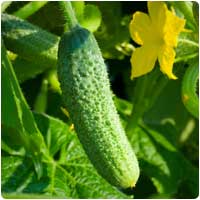
21. Cucumber
Here’s a heavy hitter that you’ll want to keep a stock of in your refrigerator. It’s alkaline, and contains so much water that it’s a very hydrating vegetable. Keep the peels on for the best results, but if that’s just too much for you one way to split the difference is to just peel strips of the peel off, creating a sort of pinwheel effect. this not only adds to the presentation but also makes it healthier for you.
Top stats (per 100g):
Vitamin C – 2%
Vitamin A – 1%
Calcium – 1%
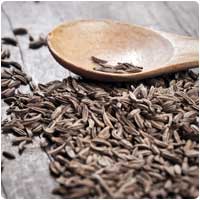
22. Cumin
Cumin is one of those spices that you either have in your home, or you don’t, depending on the type of food you’re used to cooking. If you already use it often, just keep it up, but if you’re not too familiar with it, it’s time to add it to your cart the next time you’re out shopping. It’s a spice that can actually help your body neutralize the acidic foods you eat, which means that it’s going to have a doubling effect when used in conjunction with vegetables and other alkaline foods.
Top stats (per 100g):
Iron – 8%
Calcium – 2%
Vitamin A – 1%
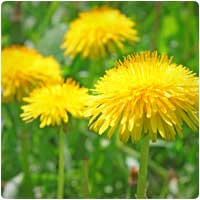
23. Dandelion
You’ll just have to get over the fact that this is considered a pesky weed in most lawns. The flower and the root are both very nutritious, and while it may take a bit of effort to start incorporating it into meals, it’s worth it. It’s an alkaline food, no doubt, and also has a detoxifying effect on the body. One other major bonus is that it can help to lower your blood pressure, so much so that it found its way onto our list offoods that help lower blood pressure.
Top stats (per 100g):
Vitamin A – 54%
Vitamin C – 32%
Calcium – 10%
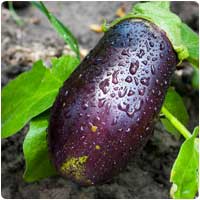
24. Eggplant
Eggplant is a versatile vegetable to add to your basket each time you’re veggie shopping. It also provides an alkaline effect, and are one of the foods that you can eat as much as you’d like. They’re low in calories, will help to fill you up and keep you feeling full, and will help balance out some of the acidic foods you eat each day. And talk about having a ton of recipes, it’s one of the most popular vegetables, with side dishes and entree recipes galore.
Top stats (per 100g):
Vitamin C – 3%
Calcium – 1%
Iron – 1%
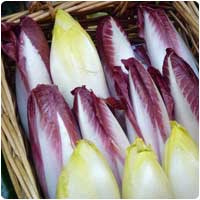
25. Endive
This is the first time that endive has made it onto one of our lists, as it is usually lumped together with “leafy greens”. But its alkaline power is high enough to give it its own credit. It can be a bit bitter for some palates, while others prefer the taste because it shakes things up from the usual spinach and romaine lettuce. No matter how you end up eating it, whether in a salad or blended up in a green smoothie, you’ll be doing the body a favor.
Top stats (per 100g):
Vitamin A – 11%
Vitamin C – 3%
Calcium – 1%
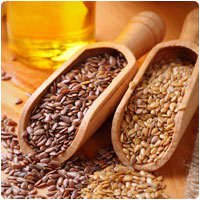
26. Flax Oil & Flax Seeds
There are plenty of benefits to flax, both in seed form and in oil form, and one of those is its ability to help the body stay alkaline. The seeds are easy enough to sprinkle on just about any dish, and don’t really have much of a flavor of their own, so you can add them without worrying about changing the dynamic of your meal. They also blend easily into a smoothie. You can use the oil to cook with, and it will help nutritious veggies become even more nutritious.
Top stats (per 100g):
Iron – 46%
Calcium – 37%
Vitamin C – 2%
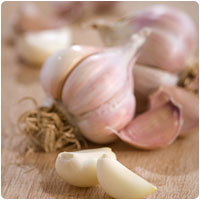
27. Garlic
Garlic has long been known to be a cleansing food, and one that can add flavor to a meal, but it also helps if you’re trying to follow an alkaline diet. It’s a big help in fighting cancer, or staving it off, and also helps to lower blood pressure. It also helps to detoxify the body, so you’re getting multiple benefits just by adding more garlic to the mix. Try stir frying alkaline vegetables with a couple of cloves of garlic. Yum!
Top stats (per clove):
Vitamin C – 2%
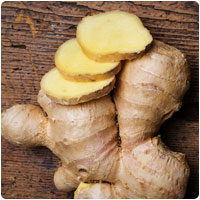
28. Ginger
Ginger is a root that is becoming more popular as more people realize all of its health benefits. Ginger is a superfood, and has plenty of detoxing properties. It’s also an alkaline food, so it’s something that you can add to a meal and know that it’s only helping it to be alkaline for you. It is so impressive that we did a full ginger benefits list on it. There are also plenty of recipes featured here that include ginger as an ingredient.
Top stats (per tsp):
Potassium – 8mg
74 Alkaline Foods to Naturally Balance Your Body
Trying to go alkaline? It’s easier when you know which foods help your body stay get to and stay in an alkaline state. A general rule of thumb is that you can eat these foods without worrying about any acidic effect they’ll have, although some are more alkaline than others. It isn’t necessary to eat only alkaline foods in order to get body’s pH levels to be alkaline, and a certain percentage of foods can be acidic, but it’s best if they’re natural, whole foods like fruits.


1. Almonds & Almond Milk
Almonds consistently rank on the list of healthiest foods to eat, so it’s no wonder that they’re also an alkaline food. They’ve also been linked to increased muscle gain, a lowering of cholesterol levels, and are able to assist with fat loss. You don’t have to eat a lot of almonds in order to enjoy their benefits, but they do make a great snack that you can take anywhere and can help you between meals.
Top stats (per 100g):
Calcium – 27%
Iron – 25%
Protein – 44%

2. Amaranth
This is a grain that not many people are familiar with, but that makes a great addition to any alkaline-focused diet plan. In addition to being an alkaline forming food, it’s also known for its relatively high levels of protein for a grain, and it’s full of vitamins and minerals that are essential for overall health. If you’re not sure how to prepare it for you and your family, there are plenty of recipes available to bring you up to speed.
Top stats (per 100g):
Calcium – 16%
Iron – 42%
Protein – 14g

3. Artichokes
Artichokes are often seen on top of salads, or used in a dip, but there are a number of reasons why you can bring them to the forefront of your diet. One of those reasons is their alkalinity, helping to raise your body’s pH levels. They’re also full of antioxidants, help to purify the liver, and aid in digestion. So having a salad with leafy greens and topped with a hearty amount of artichokes is a great idea.
Top stats (per 100g):
Vitamin C – 20%
Vitamin K – 12%
Folates – 17%

4. Arugula
Here’s a leafy green that’s worth getting to know. Arugula is often used as part of a detox diet plan, and the fact that it’s an alkaline food is a big part of that. This is full of Vitamin A and has an impressive amount of calcium in it as well. We usually associate dairy products with calcium, but here is a non-dairy way to make sure you’re getting enough. Add arugula to your cart next time you go shopping

Top stats (per 100g):
Calcium – 16%
Vitamin A – 47%
Iron – 8%

5. Asparagus
Asparagus has an alkaline effect on the body, and it just so happens that it’s one of the strongest foods you can eat in terms of alkalinity. Each food is ranked according to how alkaline it is, and asparagus is one of the “big dogs”. But it brings a lot more than that to the table, including antioxidants, nutrients, and plenty of detoxifying qualities. It’s even been noted that asparagus has anti-aging benefits, which is enough for most people to start adding more of it to their menu.
Top stats (per 100g):
Vitamin A – 15%
Vitamin C – 9%
Iron – 12%

6. Avocado & Avocado Oil
It’s no surprise that avocado is on our list of alkaline foods. It’s managed to make it onto our list of superfoods as well, so you know it’s packing a nutritional punch. Avocados are high in potassium as well as healthy fat, so in addition to helping you be more alkaline, you’re getting other perks as well. You can also use avocado oil in favor of other oils that don’t provide any alkaline benefit, or worse are acid-forming in the body.
Top stats (per 100g):
Vitamin C – 17%
Vitamin A – 3%
Fiber – 27%

7. Basil
You might not have thought that the herbs and spices you use on your food have an effect on how alkaline or acidic your pH levels are. But as it turns out there are good spices and bad spices. Basil happens to be one of the ones that helps keep you alkaline, and it also has plenty of other things going for it, such as the flavonoids it contains. These help the body to heal and basil in general can help with several different areas of the body.
Top stats (per 100g):
Vitamin A – 175%
Vitamin K – 345%
Calcium – 18%

8. Beetroot
Beetroot gets more attention now than ever before, and it’s one of the foods out there that will act to help raise your pH levels. The reason it’s an important vegetable to include in your arsenal is because it’s one of the only sources of the phytonutrient betalain which may have anti-cancer properties. Add these as a side, or use them as a salad topper. Be sure to buy this one fresh and steam it, as the pickled variety has reduced nutritional value.
Top stats (per 100g):
Vitamin C – 8%
Vitamin K – 11%
Folate – 75%

9. Broccoli
This is a quintessential healthy food and it’s easy to understand that it’s an alkaline food. Broccoli is one of those vegetables that has so much going on you simply have to make an extra effort to get more of it into your system. Some people eat broccoli every day as a way to maintain good health and make sure they’re on the alkaline side. You at least want to eat it multiple times a week, with 3 or 4 times being a good rule of thumb.
Top stats (per 100g):
Vitamin C – 135%
Vitamin A – 11%
Calcium – 4%

10. Brussels Sprouts
Maybe you left your Brussels sprouts on your plate untouched as a child, but it’s time to get over it and learn to like these healthy vegetables. They’ve been shown to be able to help the body break down the acids caused by acid-forming foods, which boosts your pH levels and helps you get to or maintain an alkaline state. In addition to that, they’re also packed with vitamins, minerals, and fiber, so they make a great side dish to any meal. It’s best to buy them fresh and steam them.
Top stats (per 100g):
Vitamin C – 142%
Vitamin A – 15%
Iron – 8%

11. Buckwheat
Buckwheat gets mentioned a lot in health food circles because it doesn’t contain wheat, but has a similar texture when it’s in noodle form. Great for gluten-free followers. It’s also an alkaline food, so you can eat it without worrying if it will be acidic in your system. It’s also a surprisingly good source of protein, and has a decent amount of iron in it as well. If you’ve never used buckwheat in your cooking before, there are plenty of recipes available to get your feet wet.
Top stats (per 100g):
Iron – 12%
Calcium – 2%
Protein – 13.3g

12. Cabbage
If you don’t like the taste of cabbage, keep an open mind. It could be that you just haven’t found a good recipe for it. It’s really easy to cook cabbage poorly, so give it another try if it’s on your Do Not Eat list. In addition to its alkalinity, it’s also been shown to be very effective in preventing as well as reversing certain cancers. Add to it the fiber content, and the low caloric load, and it’s a winner for just about every diet out there.
Top stats (per 100g):
Vitamin C – 54%
Vitamin A – 3%
Calcium – 5%

13. Carrot
Carrots are good for the eyes, but their overall effect is also an alkaline one. This makes them doubly good to eat, and they are tasty both raw, and steamed so they’re easier to chew up. Aside from the assist to the eyes, carrots also have plenty of vitamins, fiber, and potassium, making them a very well-rounded veggie. So make like Bugs Bunny and be sure to get your carrot fix every now and then.
Top stats (per 100g):
Vitamin A – 336%
Vitamin C – 10%
Calcium – 3%

14. Cauliflower
Cauliflower is in the same vegetable family as broccoli and Brussels sprouts, and shares many of the same healthy characteristics, including being an alkaline food. It has a good amount of fiber, and it’s a great non-fruit source of Vitamin C. It’s also very easy to prepare, but to keep as much of its alkaline nature as possible, eat it raw on salads or steam it until it’s tender and easy to eat. If you’re stuck on ideas for how to prepare it and
Top stats (per 100g):
Vitamin C – 77%
Calcium – 2%
Iron – 2%

15. Celery
You’ve got to love celery, even if you don’t necessarily love the taste. In addition to being an alkaline food it’s also very low in calories, and can help you body with a host of different benefits. If you don’t like crunching it up and having the strands get stuck in your teeth, pulverize it in a blender while you’re making a green smoothie. It also plays well in a fruit smoothie, adding a bit of spiciness without overshadowing the fruit flavors.
Top stats (per 100g):
Vitamin A – 4%
Vitamin C – 2%
Calcium – 2%

16. Chia
You might not think that these little seeds could pack such a nutritional punch, or have any effect on your body’s pH levels, but it turns out that they help with your alkalinity. The nice thing about them is you can sprinkle them on just about anything. Think about making a soup out of the veggies on this list, and then sprinkling in some chia seeds for good measure. Or add them to a smoothie to help tip it to the alkaline side. Be creative!
Top stats (per 100g):
Iron – 20%
Calcium – 20%
Vitamin A – 10%

17. Chives
It’s time to increase your intake of chives, and since they don’t typically find their way onto the plate, you’ll have to seek them out. They can assist the body because their alkaline producing, and they also do a good job of flavoring up a meal, so you can think of new ways to use them. One good thing they can go on is new potatoes, which makes this alkaline list and would provide you with additional nutritional benefits.
Top stats (per 100g):
Vitamin A – 3%
Vitamin C – 3%

18. Cilantro
Here’s another fantastic way to add big amounts of taste to your plate, while also helping to tip your body towards being and staying alkaline. It’s hard to imagine that these little guys can make a difference, but they’re not only alkaline-forming, they can help with cholesterol, anemia, and digestion. It’s easy enough to use it in your cooking, and you can even get herb gardens for you home and grow it organically. There’s no need to eat massive amounts of it, since it combines nicely with other foods found on this page.
Top stats (per 100g):
Vitamin C – 1%
Calcium – 1%
Iron – 2%

19. Coconut
Coconut is such a natural food that it’s no surprise that much of what’s inside is good for you. The health benefits of coconut milk, juice, and flesh are all well-documented, and now you can add alkalinity to its list of features. It’s sometimes hard to think of ways to add more coconut into your life, since you’ll want to avoid the packaged coconuts shavings used in baking. You’ll want to stick to things like coconut oil, and fresh coconut flesh in order to reap the rewards.
Top stats (per 100g):
Iron – 11%
Vitamin C – 4%
Calcium – 1%

20. Collard Greens
Collard greens are a staple soul food, and this is one vegetable to get familiar with if you’re not already. Being a green, it’s swinging some serious alkaline might, and in addition to that it made our list of top cancer fighting foods, which is no coincidence since the two go hand in hand. Add to that the whopping amount of Vitamin A it contains, and a list of other vitamins and nutrients and it’s just begging to be eaten.
Top stats (per 100g):
Vitamin A – 230%
Vitamin C – 20%
Calcium – 20%

21. Cucumber
Here’s a heavy hitter that you’ll want to keep a stock of in your refrigerator. It’s alkaline, and contains so much water that it’s a very hydrating vegetable. Keep the peels on for the best results, but if that’s just too much for you one way to split the difference is to just peel strips of the peel off, creating a sort of pinwheel effect. this not only adds to the presentation but also makes it healthier for you.
Top stats (per 100g):
Vitamin C – 2%
Vitamin A – 1%
Calcium – 1%

22. Cumin
Cumin is one of those spices that you either have in your home, or you don’t, depending on the type of food you’re used to cooking. If you already use it often, just keep it up, but if you’re not too familiar with it, it’s time to add it to your cart the next time you’re out shopping. It’s a spice that can actually help your body neutralize the acidic foods you eat, which means that it’s going to have a doubling effect when used in conjunction with vegetables and other alkaline foods.
Top stats (per 100g):
Iron – 8%
Calcium – 2%
Vitamin A – 1%

23. Dandelion
You’ll just have to get over the fact that this is considered a pesky weed in most lawns. The flower and the root are both very nutritious, and while it may take a bit of effort to start incorporating it into meals, it’s worth it. It’s an alkaline food, no doubt, and also has a detoxifying effect on the body. One other major bonus is that it can help to lower your blood pressure, so much so that it found its way onto our list offoods that help lower blood pressure.
Top stats (per 100g):
Vitamin A – 54%
Vitamin C – 32%
Calcium – 10%

24. Eggplant
Eggplant is a versatile vegetable to add to your basket each time you’re veggie shopping. It also provides an alkaline effect, and are one of the foods that you can eat as much as you’d like. They’re low in calories, will help to fill you up and keep you feeling full, and will help balance out some of the acidic foods you eat each day. And talk about having a ton of recipes, it’s one of the most popular vegetables, with side dishes and entree recipes galore.
Top stats (per 100g):
Vitamin C – 3%
Calcium – 1%
Iron – 1%

25. Endive
This is the first time that endive has made it onto one of our lists, as it is usually lumped together with “leafy greens”. But its alkaline power is high enough to give it its own credit. It can be a bit bitter for some palates, while others prefer the taste because it shakes things up from the usual spinach and romaine lettuce. No matter how you end up eating it, whether in a salad or blended up in a green smoothie, you’ll be doing the body a favor.
Top stats (per 100g):
Vitamin A – 11%
Vitamin C – 3%
Calcium – 1%

26. Flax Oil & Flax Seeds
There are plenty of benefits to flax, both in seed form and in oil form, and one of those is its ability to help the body stay alkaline. The seeds are easy enough to sprinkle on just about any dish, and don’t really have much of a flavor of their own, so you can add them without worrying about changing the dynamic of your meal. They also blend easily into a smoothie. You can use the oil to cook with, and it will help nutritious veggies become even more nutritious.
Top stats (per 100g):
Iron – 46%
Calcium – 37%
Vitamin C – 2%

27. Garlic
Garlic has long been known to be a cleansing food, and one that can add flavor to a meal, but it also helps if you’re trying to follow an alkaline diet. It’s a big help in fighting cancer, or staving it off, and also helps to lower blood pressure. It also helps to detoxify the body, so you’re getting multiple benefits just by adding more garlic to the mix. Try stir frying alkaline vegetables with a couple of cloves of garlic. Yum!
Top stats (per clove):
Vitamin C – 2%

28. Ginger
Ginger is a root that is becoming more popular as more people realize all of its health benefits. Ginger is a superfood, and has plenty of detoxing properties. It’s also an alkaline food, so it’s something that you can add to a meal and know that it’s only helping it to be alkaline for you. It is so impressive that we did a full ginger benefits list on it. There are also plenty of recipes featured here that include ginger as an ingredient.
Top stats (per tsp):
Potassium – 8mg

